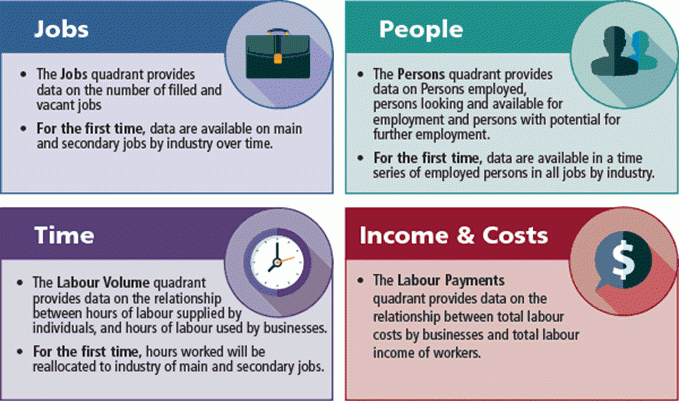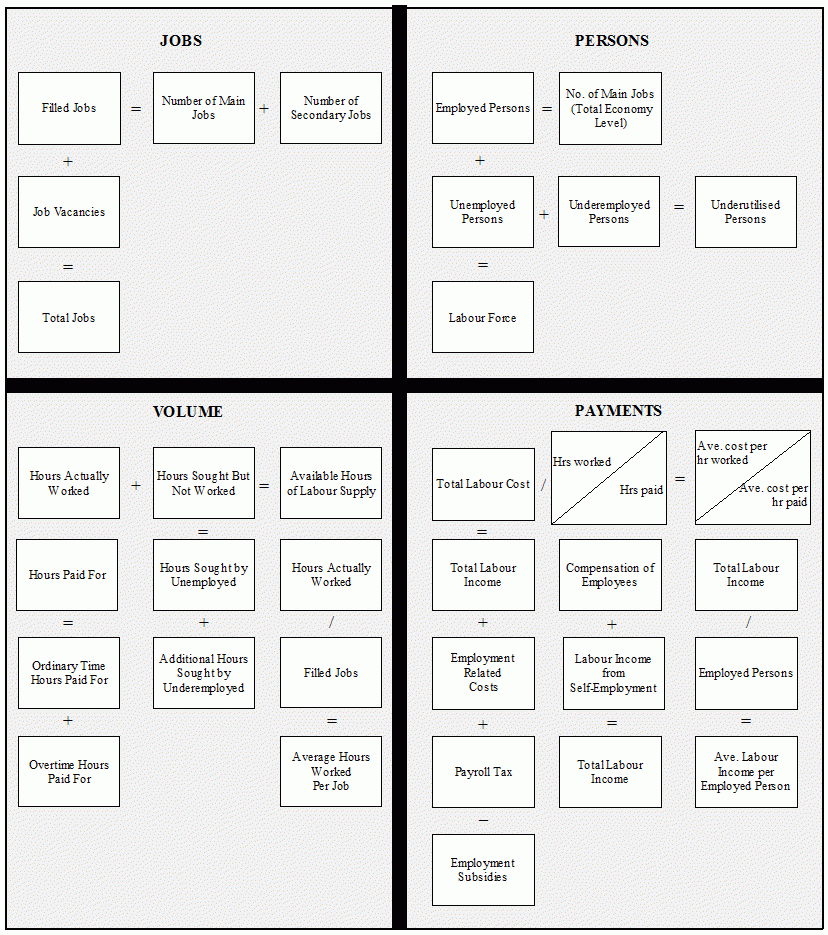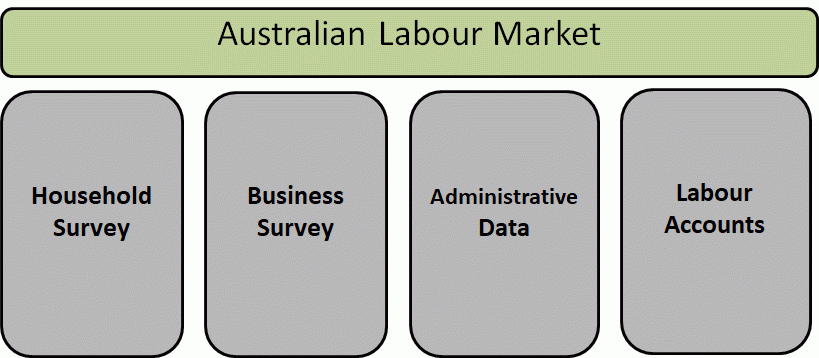The purpose of the Australian Labour Account is to support macro-economic analysis requiring data on peoples’ participation in paid employment and related production over time. Its development provides an opportunity to significantly improve the quality of aggregates such as the number of jobs occupied within each industry, measures of hours worked, and labour productivity growth.
The concepts and definitions underlying the Australian Labour Account are built on International Labour Organisation (ILO) fundamentals, and expands them to ensure consistency with the System of National Accounts (SNA08). The result provides a set of core macro-economic labour market variables derived through data integration, with both an industry focus and time series dimension.
The Australian Labour Account does not include analysis of persons, jobs, hours and payments by age or gender, as for most policy purposes these needs are adequately met from the existing Labour Force Survey, labour demand business surveys and Census publications produced by the ABS.



